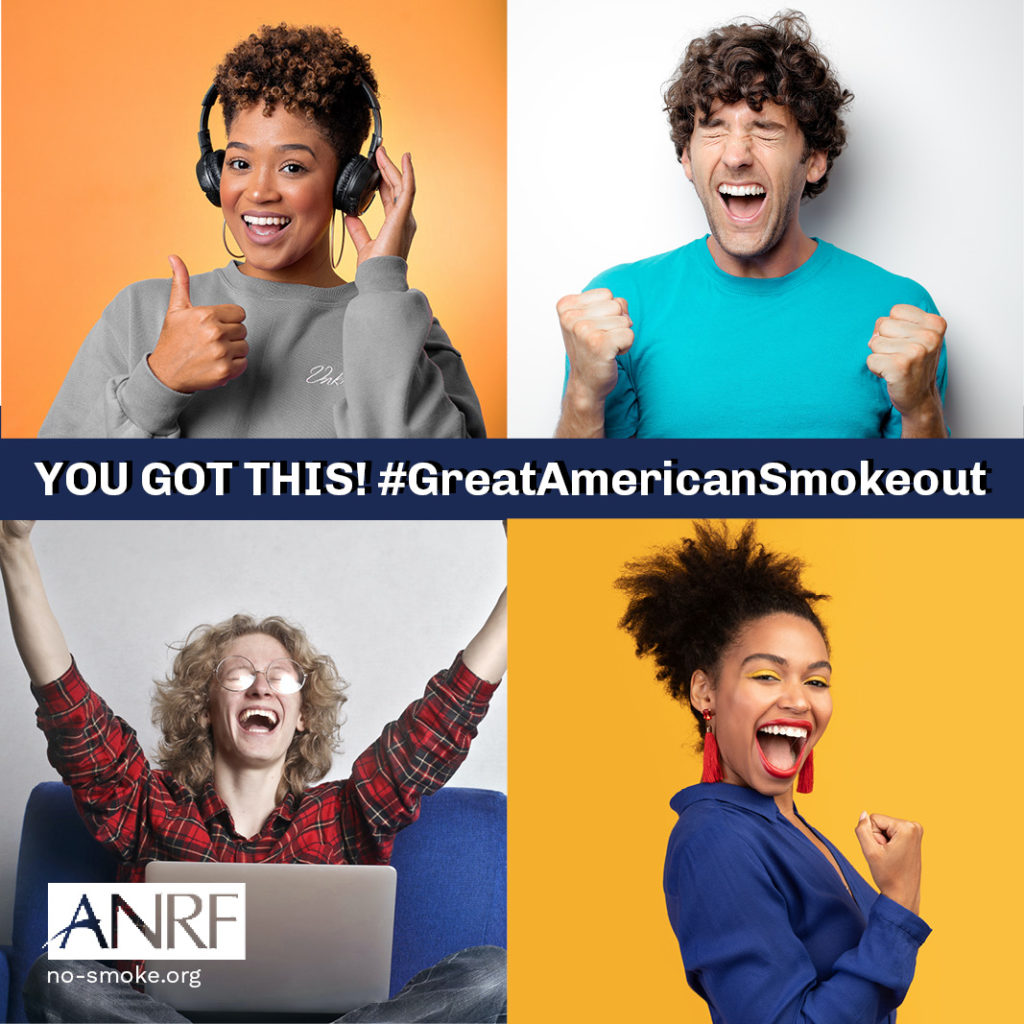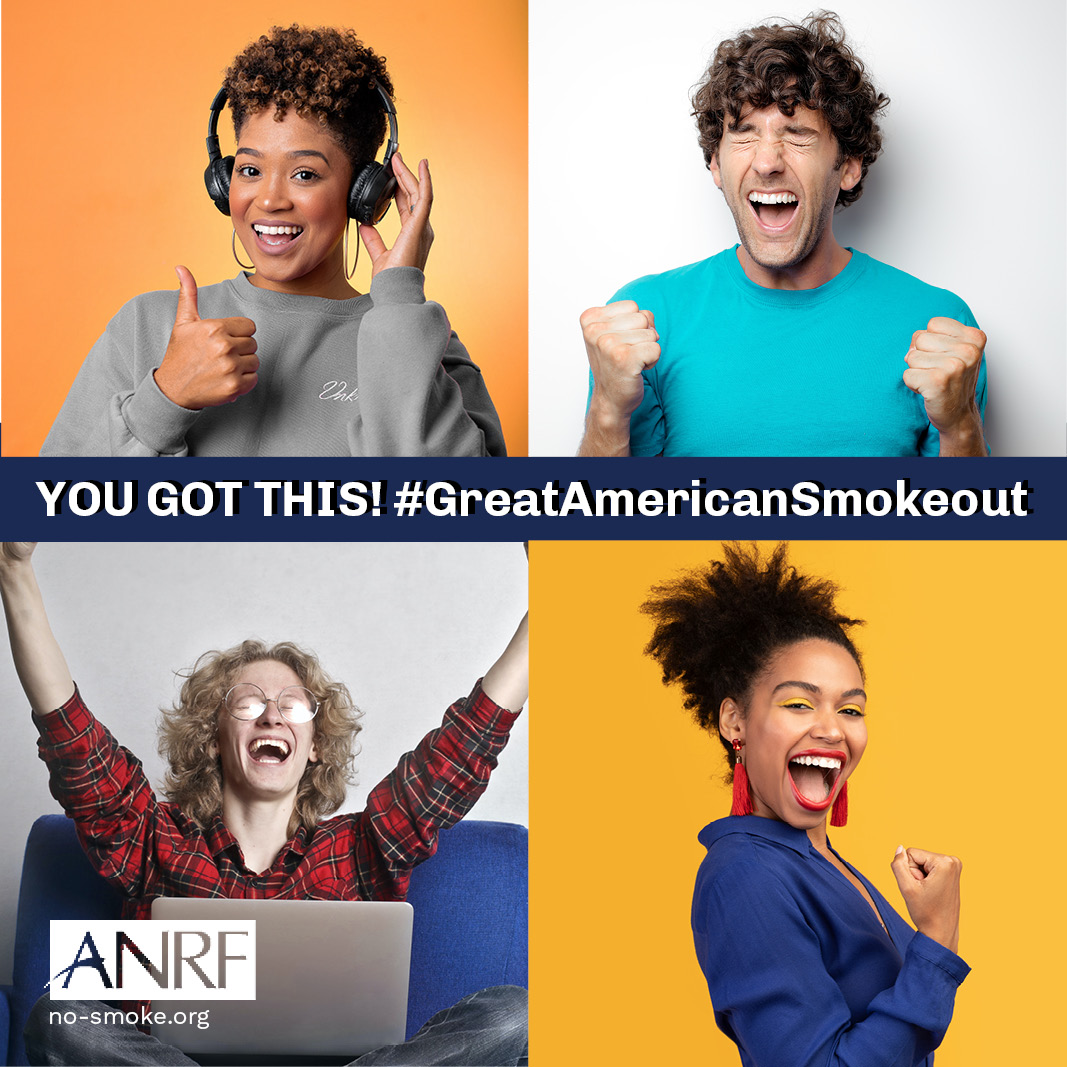There are many available resources online for people who need help to quit smoking. The Centers for Disease Control and Prevention (CDC), and other organizations provide useful resources and tips for those who want and need support for quitting smoking, vaping, or any other tobacco product. Though we here at no-smoke.org focus primarily on promoting smokefree air as the national norm, we also encourage people to seek help for quitting smoking because of the health benefits to both the person who wants to quit and the people who love them.
You are not alone
If you are seeking help to quit smoking, know that you are not alone. Whether you or a loved one has been smoking for just a year or for a lifetime, there is hope and there are people who can help. The journey might be long and difficult, or it could be very simple, but it is worth it to protect your health and the health of those around you.
Help for quitting smoking
CDC (Centers for Disease Control and Prevention)
The CDC provides many resources and tools for helping people to quit smoking. The CDC has a website, helpline, an app, live online chat, text messaging, as well as stories from real people who have quit smoking.
Call 1-800-QUIT NOW
This is the CDC’s toll-free number run by the National Cancer Institute (NCI) and will connect you to your state’s tobacco quitline (Hours of operation and services vary from state to state).
Join SMOKEFREETXT
Get daily text massages with encouragement, advice, and tips to help you quit smoking. To sign up, text CDC to 47848
quitSTART app:
According to the CDC’s website, the quitSTART app can help with the following:
- Get ready to quit with tips and information to prepare you for becoming smokefree
- Monitor your progress and earn badges for smokefree milestones and other achievements
- Get back on track if you slip and smoke
- Manage cravings and bad moods in healthy ways
- Distract yourself from cravings with games and challenges
To download and learn more about the quitSTART app, go here.
Real Stories:
Reading stories from real people who have also successfully quit smoking can encourage you to quit for good. Visit the CDC’s website to read the Real Stories from people who have quit smoking.
For more information and tips on how to quit smoking, please visit these CDC’s tips websites: Tips & Quit Smoking Tips
The Great American Smokeout
The American Cancer Society holds an annual event on the third Thursday of November called The Great American Smokeout, which is geared towards providing people with help to quit smoking. If you or someone you know wants to quit smoking, we recommend checking out this important event.
This is the resources page for The Great American Smokeout. You can download the resources and get access to additional tobacco cessation materials when you create a login request: here.
Help for you to quit smoking in California from the California Department of Public Health
California’s Tobacco Control Program is the longest-running comprehensive tobacco control program in the nation and their new Kick It website has many ways to help you quit:.
Smoking and Secondhand Smoke
Smoking damages not only the health of the person who smokes, but it negatively impacts the health of their friends and family members too because smoking creates dangerous secondhand smoke. As scientists and medical professionals have shared for decades, smoking near nonsmokers can have major health consequences. Secondhand smoke not only affects those who are in the smoker’s life, but it also affects neighbors, co-workers, and anyone coming into contact with the person who smokes.
Smokefree indoor air laws or smokefree home policies not only clear the air of toxic secondhand smoke, they can also help smokers kick the habit by eliminating visual cues and temptations to smoke.
no-smoke.org
On a national scale, according to the CDC, cigarette smoking causes about one in every five deaths each year. Of these deaths, exposure to secondhand smoke causes an estimated 41,000 deaths every year among adults.
People who smoke should consider the implications of smoking on their own health and life, as well as on others. Smoking not only affects the person who smokes, but also their family and friends, and even strangers and neighbors as well, because secondhand smoke can linger in the air for hours after someone has smoked. Smoke from tobacco, marijuana, and vape can drift between walls and vents affecting others who are in the building with a person who smokes. If someone quits smoking, that will improve the health of everyone around them significantly. Learn more about secondhand smoke here.
Also according to the CDC, “The only way to fully protect non-smokers from the dangers of secondhand smoke is to not allow smoking indoors.” Ventilation and providing smoking rooms doesn’t fully protect nonsmokers from toxic secondhand smoke.
More on secondhand smoke from the CDC: Fact Sheet & Tips to quit smoking – guide to secondhand smoke.
Smoking and Thirdhand Smoke
Secondhand smoke is dangerous, even for a short amount of time, and someone who smokes also needs to consider that thirdhand smoke affects the health of others as well. Thirdhand smoke is the toxic residue from smoking that sticks to things and contains dangerous cancer-causing chemicals. Someone who smokes, whether it is cigarettes, marijuana, or vaping products, will have thirdhand smoke that sticks to their clothes, body, and hair.
Our Thirdhand Smoke Fact Sheet explains how thirdhand smoke is dangerous to your health because it can linger in the person who smokes’ house and in their neighbors’ homes too.
The Thirdhand Smoke Resource Center has information on the dangers of thirdhand smoke and how it affects people.
“The only way to fully protect people from the dangers of secondhand smoke is to not allow smoking indoors.”
The centers for disease control and prevention
Additional organizations that can help you to quit smoking
National Tobacco Cessation Collaborative
This website offers a collection of tobacco cessation resources and research. The site includes a working bibliography, information on tobacco policies that influence cessation, and links to helpful resources related to cessation.
QuitNet
QuitNet helps smokers kick their nicotine addiction by offering tailored cessation and diagnostic tools and around-the-clock support from peers and counselors.
Smoking Cessation Leadership Center (SCLC)
Our mission at the Smoking Cessation Leadership Center (SCLC) is to decrease smoking rates and increase the number of health professionals who help smokers quit.
This is quitting – Truth Initiative
“This is Quitting is a free and anonymous text messaging program from Truth Initiative designed to help young people quit vaping. The first-of-its-kind quit program incorporates messages from other young people like them who have attempted to, or successfully quit, e-cigarettes. Teens and young adults can join for free by texting DITCHVAPE to 88709.







